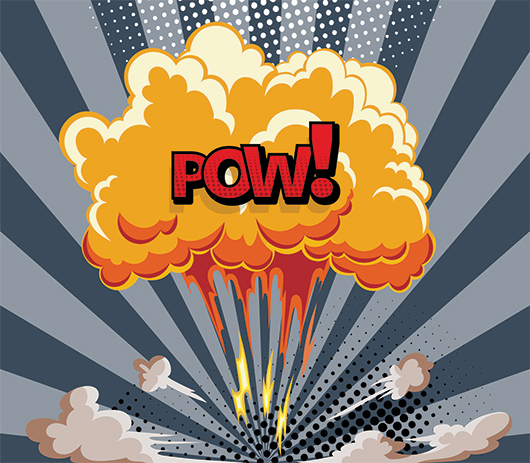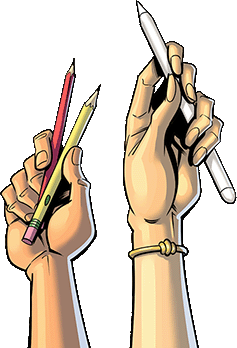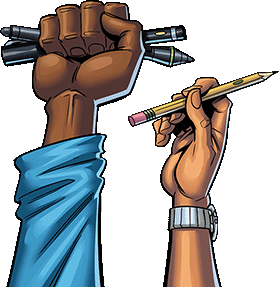Popular Ways to Script your Graphic Novel
March 2, 2021
For a building to be strong and stable, it needs a solid foundation; similarly, for a graphic novel to be engaging and make your readers want more with every page turn, it needs a good script behind it.
The writing process is completely subjective and unique to every author. Some authors have a lucky cap; others engage in strange rituals before, during, and after writing sessions.
Good stories make the hair on the back of your reader’s neck stand up, their eyes tear up, or send them into fits of laughter. If you want to write a great graphic novel, you first have to learn how to write the script.
There are countless ways to get the idea for your graphic novel or comic and probably just as many for scripting your graphic novel. But when it comes down to it, you can either script it like a piece of art or more like a piece of literature, depending on where your strengths lie.
Here are tips on narrative structures so that you can get a big-picture sense of the final draft’s appearance.
Common Narrative Structures
Most stories have a general structure that moves the characters from one place to another. This can be a symbolic place as characters progress on mental and emotional journeys. Or it can be a literal place, like in The Wizard of Oz as Dorothy makes her from Kansas to Oz and back to Kansas again.
Here are common elements that you find in many stories (although more modern tales may buck convention and dispense with a coherent timeline):
- A beginning, middle, and end
- A logical timeline
- A character’s journey
- Dialogue and description that enhance the story
- Thematic messaging
Almost every narrative has a combination of these elements to varying degrees. After you’ve written your script, you can look at some of these big-picture factors and make sure that they all make sense.
Once you have the broad strokes, you can start concentrating on the minutiae of writing a script. Here are three common ways that comic book creators script their graphic novels.
Thumbnail Sketch Format
Many authors and artists write comics scripts with thumbnail sketches, relying more heavily on the art-driven story than the writing. If you need your script to resemble your finished product closely, this is an ideal script format.
Using a notebook, sketch out each panel on the left-hand side and write numbers to correspond to dialogue and description on the right-hand page, so you can keep track of where something is said. Each pair of pages – thumbnails and panel descriptions – constitutes one page of your comic book, so keep that in mind as you write your sample scripts.
You don’t have to draw comics well to accomplish a thumbnail sketch script, as you are only using outlines and shapes to connote where characters and other objects are in each panel. It’s not an undertaking that requires a high level of artistic ability but relies more on organizational skills.
Screenplay Format
If you have ever written for TV or movies, you may consider writing your graphic novel final script in screenplay format. Many comic artists also are interested in telling stories in other visual fashions, like writing for TV and film.
A screenplay describes the setting and moves quickly into a dialogue-based narrative, naming each character at the start of their lines and noting any action or movement in between.
You can use supplemental pages to go in-depth into character development; these won’t necessarily be included with the finished product, but you as the author need to know all the details of your characters’ background. These key details inform each act, structure you need to build a memorable narrative.
Comic Book Format
The other popular format you can put your graphic novel script into is comic book format or comics format. This is a useful form as it gives you both the page count and panel descriptions, breaking down every facet of your graphic novel.
You still don’t need to be an expert artist to make use of comics format; even though it has all the panel breaks and page breaks, you’re only using text to plot out your book. It’s a quicker method than thumbnail sketches, so you’ll save time when scripting your graphic novel.
For each page of your comic book, designate it at the top of the script page, and then describe each panel – panel 1, panel 2, panel 3, and so on. For each panel description, mention the characters’ dialogue and any action occurring.
Splitting up each panel and page helps you keep track of how many actual pages there are for your comic book. This is important when you’re using high-quality printing services like Comix Well Spring because your page count needs to be multiple of four for certain types of bindings.
Other Options for Formatting
Many authors find their own particular way to script their graphic novel ideas, but it’s essential to stay within the bounds of what’s accepted by the industry.
Most of the time, graphic novels are a collaborative affair, with colorists, letterers, and artists putting their stamp on the project. To translate all of your ideas well, you need to use a graphic novel format all of these professionals recognize.
Many graphic novel authors use a combination of comics format and screenplay format so that you can keep track of your page count while simultaneously giving your ideas the full treatment they deserve.
To use a hybrid model like this one, simply include the page breaks where you believe they will go and number the pages so that the result is an accurate page count.

The Last Word
On your graphic novel journey, you need to translate your creative ideas into a format that different collaborators can understand. Luckily, there are several script formats for you to choose from, depending on whether your strength lies in images or words.
Whether you choose to write your script as thumbnail sketches and numbered descriptions or as a quasi-screenplay and comics format, you need seasoned professionals to help make your ideas a reality.
Contact us at Comix Well Spring to start your creative journey today.


